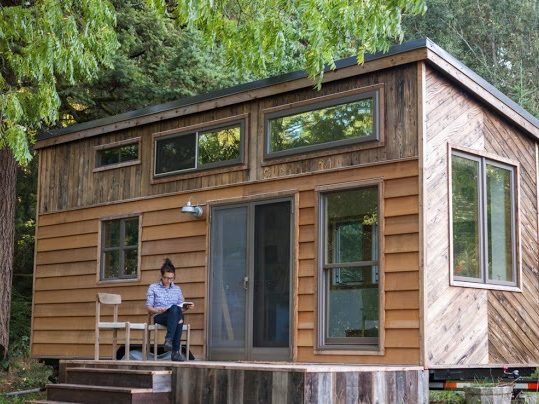What have we learned from the tiny home trend?
The trend of downsizing to a tiny home or living as a minimalist is a growing trend in the UK, originating from the US in the late nineties. Regarded as a social movement, it is a way to live a simpler, greener and cheaper life. With numerous headlines citing the UK’s housing crisis and the difficulty for those finding funds for a house deposit, moving into smaller homes seems like an ideal solution. So what can we learn from those who have already made the change?
An alternative to the traditional property ladder
For many people in the UK, getting on the property ladder is a not an option due to increasing property prices and the rising cost of living. The tiny homes philosophy embraces living with what is only truly essential in a property the size of a large shed. These cabin style homes can be built in numerous places, such as an unused garden space, often without the need for planning permission (but obviously in conjunction with the owners: many tiny homes are built in the gardens of other family members for example).
Financial savings
With drastically reduced maintenance and running costs, not to mention the price of a tiny home (from around £10,000), living in a small space is a way to live with less financial pressure or an opportunity to save money. Some people are choosing to downsize from large homes that they simply don’t need to small studio spaces or cabins to suit a less materialistsic lifestyle.
A greener way of life
These small footprint homes are fully insulated and energy efficient making them ideal for those wanting to live a greener life and to reduce the human impact on our planet. This is one solution to creating sustainable homes in our environmentally conscious world.
 Minimalist living
Minimalist living
Living in less than 40 square metres requires only having essential items and getting rid of anything else that doesn’t serve a purpose. We all live in a world of consumerism but this way of life forces minimal living as there literally isn’t the space for anything else.
Healthy mind
Living with less clutter is also good for the mind, as many tiny homers attest having achieved a simpler, more down to earth way of life. It’s a case of decluttering your home and your mind resulting in greater clarity with every remaining item being valued and appreciated.
Mutlifunctional interiors
With limited space inside theses tiny homes, the interior has to work practically and efficiently. Sleeping areas are often located in otherwise tricky roof spaces as standing space isn’t necessary and clever storage solutions are incorporated into the design with under the floor space and wall surfaces being utilised.
 Flexible living for modern life
Flexible living for modern life
The tiny home movement isn’t just for those wanting to downsize for financial, environmental or minimalist reasons, it can also work as an extra space for family and friends, students, office space or a potential B&B income. Tiny homes are available in a range of options from build-it-yourself kits to bespoke pre-made cabins ready to be craned into position, proving that bigger isn’t necessarily better.
You May Also Like
- Five Clever Ways to Make the Most of a Small Home
- From a one to a two-bed in this small-space duplex
- Planning a Small-Space Dining Room
All photos courtesy of Tiny House Listings & Unsplash.














Show Comments